Troop Ships of the 5AD
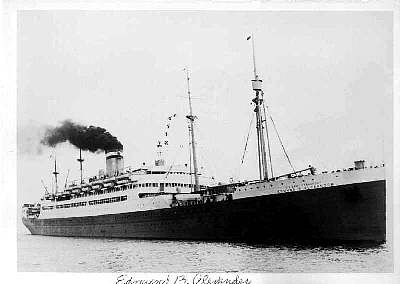
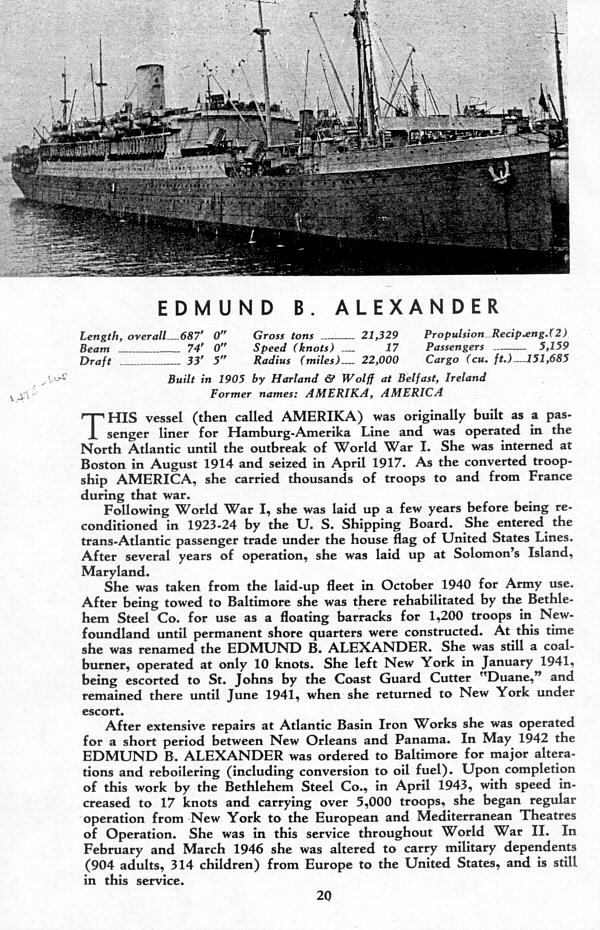
Two pictures of the Edmund B. Alexander
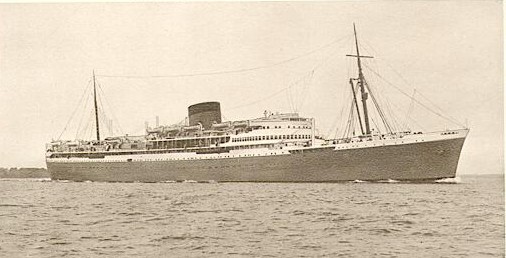
The Athlone Castle
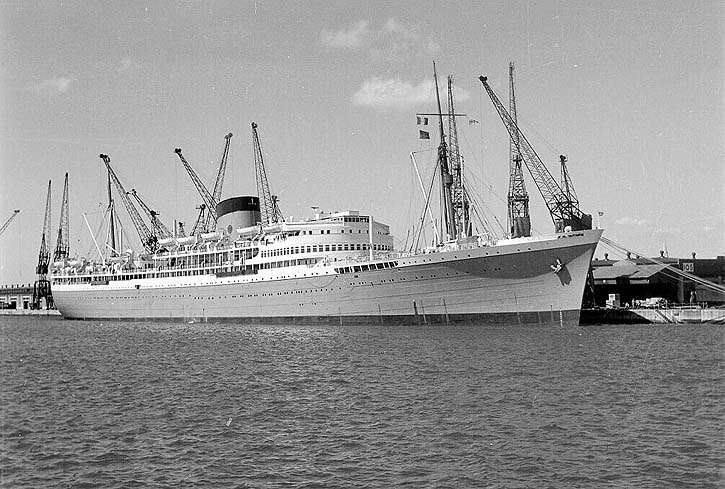
Another picture of H.M.T. Athlone Castle
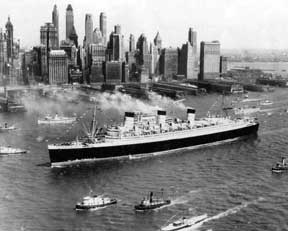
The Queen Mary

The R.M.S. Aquitania left New York with the 628 TD's on board on 29 January
1944. For more information on the Aquatania, click on the picture above.

The James Parker (AP 46) carried
the 772nd Tank Battalion
General Oliver was aboard and in command of troops on the Edmund B. Alexander. General Regnier
was aboard and in command of the troops on the Athlone Castle.
The advance billeting party under the command of Col. Cole had crossed earlier on the Queen Mary.
Webmaster note: The following email was received from Greg McKee and is reprinted here with his
permission.
"Much more can be said about our troop ship, the "Athlone Castle". As stated on the website,
General Regnier was on board as "commander of troops". I was the Adjutant although my normal
assignment at that time was S-3 of CCA. General "Gene" Regnier was a fiery cavalryman, hot
tempered and a very fast thinker. He was also a great tactician having been a writer of numerous
field manuals before the war when stationed at Ft. Riley, KS, the home of Cavalry.
Well, the first day at sea, the General and I, accompanied by other staff members inspected the
ship. He was not merely inspecting the condition of the troops under his command, although them
too, but of those parts of the ship that impacted on the well being of his troops.
Everything went pretty well until we reached the kitchen. At that point all hell broke loose.
The place was filthy. Our impression was that it had never had a real scrubbing. The tops of the
reefers (refrigerators) for example, were holding up a layer of solidified cooking grease that in
places was a full inch and a half thick! And the ship was an old timer. Not part of the British
Navy, but a passenger vessel that for many years had made the monthly voyage between Liverpool
and Capetown, South Africa. It was a shocker to find these conditions and the General demanded
that the Captain of the vessel get it cleaned up "right now". Lt. Col. XXX of the British Army
was supposed to be the liason officer between us Americans and the Ship's Captain. He was a
complete ass and damned near impossible to get along with, which usually fell to my lot. He
refused to persuade the Captain to clean his kitchen until General Regnier threatened pretty dire
action; namely to refuse to allow the troops to eat food prepared in that kitchen.
The liason officer was a strange duck, wounded earlier in the war and assigned to the liason duty
being no longer fit for service in the line. He had no "respect" for the American service man and
made snide remarks about our likely fighting abilities. But nevermind, he got his just dues when
we reached liverpool.
The clean-up happened, but not by the ships crew. Over the objection of the Ship's Captain.
General R. detailed some of our troops to clean it up. As you can imagine, it was quite a job.
Regnier refused to let any food prepared in the kitchen be served until he inspected and declared
the kitchen fit. During the next 24 hours, over the strong objections of the Captain, the holds
were opened and C-Rations were brought out and distributed.
The ship was really a near tub. She had, immediately before our voyage aboard her, been used to
transport Australian and New Zealand troops to the UK. During her last voyage before ours, the
Athlone Castle had encountered a severe North Atlantic storm which had somehow caused her giant
diesels to break loose from their mounts. As I recall those days, she was in dry dock at
Liverpool for extensive repair, but in the meantime, something happened to another vessel, name
unknown, the one we had been scheduled sail on. Torpedo ?, perhaps. I don't remember, if I ever
knew.
But those were the heyday of German submarine successes and it had been decided that large
convoys, escorted by destroyers, offered the greatest probability of getting to the UK without
sinkings. Prior to that time, many crossings were attempted by single vessels trying to "sneak
across". German subs based in the Bay of Biscay were taking a very heavy toll. So the CCA half
of the Division and more, had to sail in that convoy which eventually numbered about 30-odd
vessels. If we couldn't make that particular convoy, it would be another month or so before
another could be readied.
To make our sailing possible, the Athlone Castle, was repaired by aligning its engines properly
and fixing them in place by pouring concrete around them!
So sail in her, we did.
It was scary, sometimes rough on the February Atlantic, lots of seasickness (waiting for
submarines will increase the likelihood of that), but we finally reach Liverpool for disembarcation
and were very glad to no longer have "bubble and squeak" for breakfast. (Little suspecting that
thousands of Brussel Sprouts lay ahead)..
That's when the Liason Officer truly learned to hate the Amnerican Army. Several of our soldiers
had sneaked a puppy or two on board and kept it out of sight until disembarcation on our night of arrival.
Then the British Customs crews spotted them. The Brits were afraid of something about as dangerous
as today's "mad cow disease", except that it pertained to dogs. A dog could only be brought into
the UK after a 6-month or so period of quarentine. Actually, it was quite forbidden to bring one
in, much less two.
The authorities held the Liason Officer responsible for having failed in his duty and launced
quite an investigation and as a result of it, they discovered that he had been smuggling in large
quantities of flints for cigarette lighters, the notched steel wheels that made them spark when
turned sharply by thumb, as well as spare parts for wrist watches. Apparently all these were in
short supply in war time Britain.
The more the authorities investigated him, the more they found. As late as a couple of months
after our arrival, I was questioned about him, the dogs and the smuggling. I heard later he was
canned, or worse."






